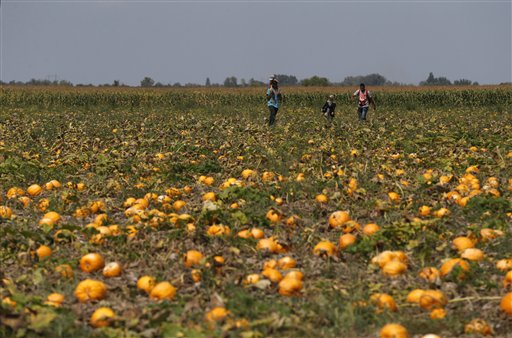Families of Countries

People aren’t the only things with relatives; countries have them, too. Families of countries exist for several reasons, such as location, trade or politics.
Balkans
The Balkans refers to the southeastern-most peninsula of Europe. It includes all or most of Slovenia, Croatia, Serbia and Montenegro (formerly Yugoslavia), Bosnia and Herzegovina, Albania, Macedonia, Bulgaria and European Turkey. Southeast Romania and northern Greece are also part of the Balkans.

Migrants cross a field near
the Serbian-Hungarian border, Aug. 2015
Source: AP Photo/Darko Vojinovic
Central America
Central America refers to the seven countries of North America between Mexico and South America: Belize, Costa Rica, El Salvador, Guatemala, Honduras, Nicaragua and Panama.
Latin America
Latin America refers to all countries south of the United States-the nations of Central and South America and Mexico.
The Middle East
These countries of western Asia, northern Africa and the Arabian Peninsula are related geographically: Bahrain, Egypt, Iran, Iraq, Israel, Jordan, Qatar, Kuwait, Lebanon, Oman, Saudi Arabia, Syria, Turkey, the United Arab Emirates and Yemen.
NATO Countries
The North Atlantic Treaty Organization (NATO), formed in 1949, has one goal: to protect democratic systems of government. Today the member countries are: Belgium, Bulgaria, Canada, Czech Republic, Denmark, Estonia, France, Germany, Greece, Hungary, Iceland, Italy, Latvia, Lithuania, Luxembourg, the Netherlands, Norway, Poland, Portugal, Romania, Slovakia, Slovenia, Spain, Turkey, the United Kingdom, and the United States.
Polynesia
Polynesia, “many islands,” is a collective term for the islands of the east-central Pacific Ocean, which include Cook, Easter, Pitcairn, Samoa, Tahiti, and Tuvalu, as well as the Hawaiian islands.
Southeast Asia
The countries that make up Southeast Asia are: Brunei, Indonesia, Cambodia, Laos, Malaysia, Myanmar (formerly called Burma), Vietnam, Singapore, Thailand, the Philippines, and East Timor.
Scandinavia
This family has many ties: geographical, cultural, political, and historical. These countries occupy a region of northern Europe: Denmark, Norway, and Sweden. Sometimes Finland, Iceland, and the Faeroe Islands are included.
The Union of Soviet Socialist Republics (USSR)
The USSR, 15 republics in eastern Europe and northern Asia, was formed in 1922, after the Russian Revolution. Until 1991 it was the world's largest country, covering one-sixth of the land area of the world. Many people thought that the USSR and Russia were the same thing. But Russia was really only one of its republics. As of December 31, 1991, the USSR no longer existed as a single country. Instead, it became 15 independent countries: Armenia, Azerbaijan, Belarus (Byelorussia), Estonia, Georgia, Kazakhstan, Kyrgyzstan, Latvia, Lithuania, Moldova, Russia, Tajikistan, Turkmenistan, Ukraine, and Uzbekistan.
The United Arab Emirates
This group of seven kingdoms was created in 1971 on the Persian Gulf coast of the Arabian Peninsula. They are ruled by sheiks. In the Muslim world, an emir is a ruler or prince; an emirate is his state. The kingdoms are: Abu Dhabi, Ajman, Dubai, Fujairah, Ras al-Khaimah, Sharjah, and Umm al-Qaiwain.
The United Kingdom of Great Britain and Northern Ireland
These countries are ruled by the British royal family and Parliament: England, Northern Ireland, Scotland, and Wales.
Great Britain includes England, Scotland, and Wales. The British Isles include Great Britain, Northern Ireland, the Republic of Ireland, the Isle of Man, and the Channel Islands.
The European Union
Formed in 1993, the EU is an economic and political confederation of European nations that are responsible for a common foreign and security policy and for cooperation on justice and home affairs. Twenty-seven countries - Austria, Belgium, Bulgaria, Cyprus, the Czech Republic, Denmark, Estonia, Finland, France, Germany (originally West Germany), Great Britain, Greece, Hungary, Ireland, Italy, Latvia, Lithuania, Luxembourg, Malta, the Netherlands, Poland, Portugal, Romania, Slovakia, Slovenia, Spain, and Sweden - are full members of the organizations of the EU.

European Commission President Jean-Claude Juncker
during a European Union Summit, Oct. 2015
Source: AP Photo/Francois Walschaerts
